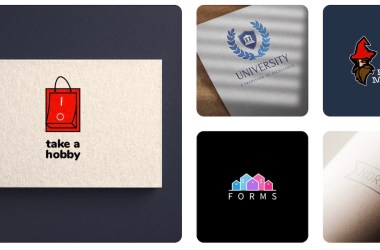Updated: Oct 01, 2024 By: Marios

While getting a design degree isn't a prerequisite for becoming a graphic designer, having one might offer more benefits than you think. Many aspiring design and art professionals are not sure if it is necessary to get a design degree, especially since you can easily get access to free online lessons that teach basic skills.
However, graphic design is all-inclusive from posters to advertisements on television, social media posts promoting services and products and billboards. Let's explore the benefits of getting a design degree.
Learn in-demand skills
The field of design is a wide one that offers a comprehensive range of skills that are in demand in the job market. From graphic design offered at the American International College to product design and other design fields, each degree gives you a unique skill set.
These programs are also combined with technology, providing knowledge in editing or software programs. Some in-demand skills you can acquire from a design degree include project management, visual communication, technical skills, creativity, critical thinking, and problem-solving skills. These skills can not only be used in design-related jobs but in other fields.
Increases employability
Getting a degree shows your commitment and effort in honing the skills required for a job with a potential employer. Even with a good portfolio, some employers might be reluctant to hire if there isn't a degree on the resume.
Industry growth

The design industry is growing as people now recognize the need for creative professionals. From fashion to technology, design can now improve services, products and even customer experience. For instance, the surge in the demand of UI/UX designers in recent years. These trends show that the design field is growing, and there are various opportunities for design graduates.
Increases earning potential
You can get a design job without a degree. However, individuals with a degree often get more salary and commissions. A design degree gives you a professional image because it is structured in a way that helps individuals prepare for real-world projects. Potential clients and employers will be more confident in your dedication and skill sets.
Networking
During the learning process, you can collaborate and network with others in your field and profession. For example, volunteering opportunities, cultural events, and internships will provide you with valuable connections, industry insights, and hands-on experience. Additionally, you will get to explore the various aspects of the design industry while expanding your professional network.
You are not limited to creative studies or design agencies. Businesses in different sectors such as multinational corporations and tech startups, recognize the value of design in improving their products, services, and brands. Thai increases your potential to work in almost all industries.
Expert feedback
A design degree program is usually taught by experienced professionals who can help you master the craft, skills, and knowledge required in the field. When learning on your own, you will have the option to make mistakes, skip crucial topics, or even learn poor habits that might affect your professionalism.
Learning a degree needs communication and feedback, things you cannot get if you don't have an active tutor. Your instructors are happy to offer support and advice even after you graduate.
Endnote
The design world is growing and becoming competitive, which has resulted in an increased demand for problem solvers and creative thinkers. Earning a degree from an accredited institution can provide these skills. The capacity to think as a designer, view problems from different angles, and create innovative solutions can only be achieved through learning from an experienced instructor.



